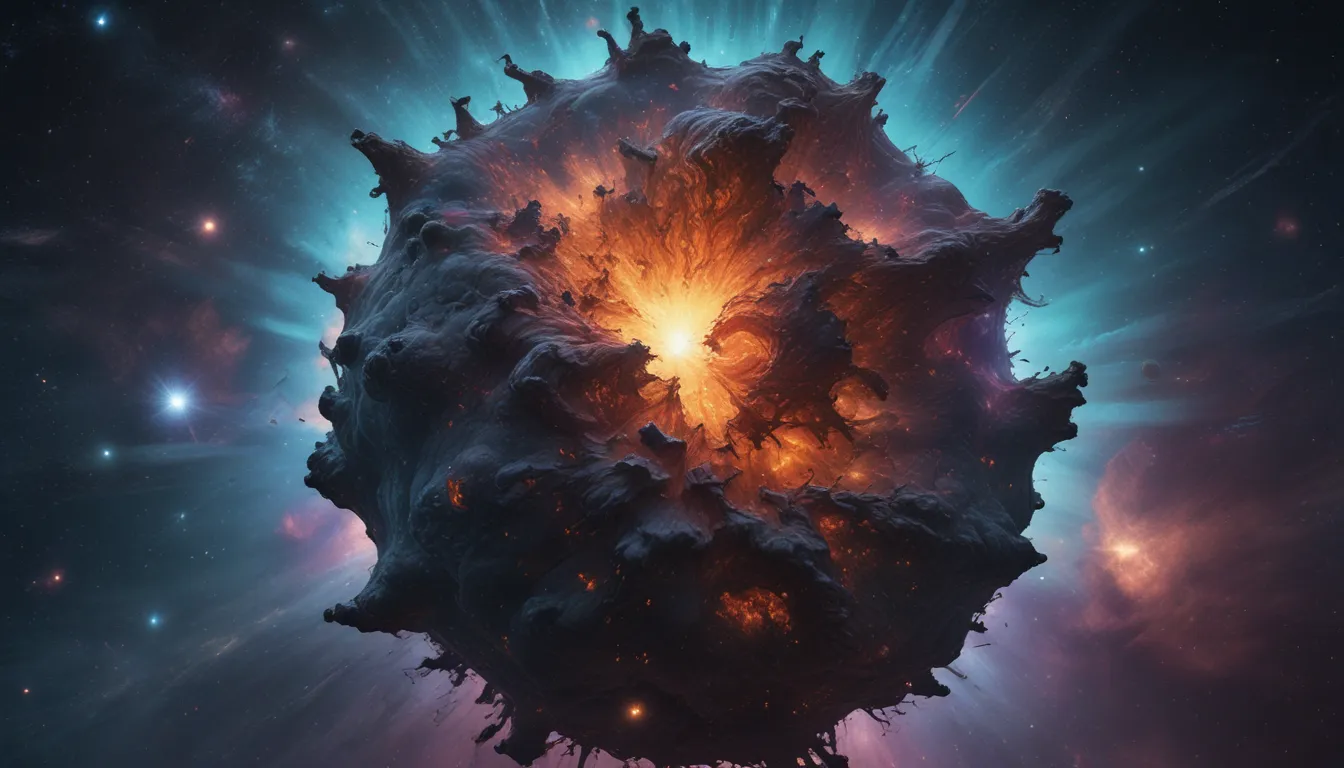The pictures we use in our articles might not show exactly what the words say. We choose these pictures to make you interested in reading more. The pictures work together with the words but don’t take their place. The words still tell you the important facts.
Have you ever gazed up at the night sky and marveled at the vastness of the universe? Among the many wonders that grace our celestial landscape, supernova remnants stand out as captivating remnants of stellar explosions, offering a revealing glimpse into the dynamic and ever-changing nature of our cosmos. As remnants of massive star explosions, supernova remnants play a pivotal role in shaping the universe, triggering the birth of new stars, and providing valuable insights into the complexities of stellar evolution.
Unveiling the Mysteries of Supernova Remnants
When a massive star reaches the end of its life, it undergoes a cataclysmic explosion known as a supernova. This monumental event releases an extraordinary amount of energy and matter into space, leaving behind the remnants that continue to captivate astronomers and enthusiasts alike. These remnants, known as supernova remnants, come in various forms and exhibit a range of intriguing characteristics that shed light on the cosmic processes at play.
Two Main Types of Supernova Remnants
Supernova remnants can be classified into two distinct types: shell-like remnants and composite remnants. Shell-like remnants typically display a spherical or ring-like structure, while composite remnants combine a shell-like appearance with the presence of a pulsar or neutron star at their center. These diverse structures hint at the intricate nature of supernova remnants and the underlying physical mechanisms that govern their evolution.
Essential Role in Galactic Life Cycles
The aftermath of a supernova explosion enriches the surrounding space with heavy elements such as iron and gold, which are essential building blocks for future star formation. By dispersing these enriched materials into the interstellar medium, supernova remnants play a crucial role in nurturing the birth of new stars and influencing the ongoing cycle of stellar life and death within galaxies. This intricate interplay highlights the interconnectedness of cosmic phenomena on a grand scale.
Cosmic Showstoppers: The Crab Nebula and Veil Nebula
Among the multitude of supernova remnants that dot the night sky, the Crab Nebula and the Veil Nebula stand out as prominent examples of these celestial remnants. The Crab Nebula, born from a historic supernova explosion observed in the year 1054, features a pulsar at its core and continues to dazzle observers with its remarkable beauty. On the other hand, the Veil Nebula in the constellation Cygnus showcases intricate filamentary structures created by shockwaves interacting with surrounding material, offering a captivating display of cosmic artistry.
Unveiling the Secrets of Supernova Remnants
Beyond their visual appeal, supernova remnants harbor a wealth of scientific information that allows astronomers to delve deeper into the mysteries of the universe and unravel the complex processes at work within these cosmic phenomena. From the emission of various forms of radiation to the creation of cosmic rays, supernova remnants serve as celestial laboratories for studying a diverse array of astrophysical phenomena.
Insights into Neutron Stars and Black Holes
Supernova remnants often house dense remnants such as neutron stars or even black holes, providing valuable insights into the physics of extreme objects and their role within the cosmic landscape. By studying the properties of these remnants, astronomers can glean valuable information about the enigmatic nature of neutron stars and black holes, shedding light on the extreme conditions that exist within these cosmic entities.
Cosmic Ray Producers
Considered one of the primary sources of cosmic rays in the universe, supernova remnants generate high-energy particles that travel at nearly the speed of light, exerting a significant influence on their surrounding environment. The production of cosmic rays within these remnants highlights the dynamic interplay between astronomical phenomena and the energetic particles that permeate the cosmos, offering a window into the high-energy processes at play in our universe.
Stellar Evolutionary Insights
By examining the expansion rate of supernova remnants, astronomers can estimate their age and gain valuable insights into the evolution of stars and the timescales involved in various stellar processes. This information enhances our understanding of stellar evolution and provides a glimpse into the life cycles of stars, from their formation to their eventual demise in spectacular supernova explosions.
Embracing the Wonders of Supernova Remnants
As we peer into the vast expanse of the cosmos, supernova remnants stand as poignant reminders of the transformative power of stellar explosions and the enduring legacy they leave behind in the fabric of space. From their aesthetic allure to their profound scientific significance, supernova remnants offer a multifaceted portrait of cosmic phenomena that continues to inspire awe and curiosity among stargazers and researchers alike.
FAQs: Unraveling the Mysteries of Supernova Remnants
-
What is a supernova remnant?
A supernova remnant is the residual glow and expanding debris left behind by a star that has undergone a supernova explosion, marking the end of its stellar journey. -
How are supernova remnants formed?
Supernova remnants are formed when a massive star reaches the end of its life cycle and undergoes a cataclysmic explosion, releasing its outer layers into space and creating a stunning cosmic display. -
What is the significance of studying supernova remnants?
Studying supernova remnants provides valuable insights into stellar evolution, nucleosynthesis, cosmic rays, and the formation of new stars and galaxies, enriching our understanding of the dynamic processes that shape the universe. -
How do scientists study supernova remnants?
Scientists utilize a range of observational techniques, including optical, X-ray, and radio telescopes, to study different aspects of supernova remnants and unlock their secrets, unveiling the mysteries encoded within these cosmic relics. -
Can supernova remnants be seen from Earth?
Yes, many supernova remnants are visible from Earth through various observational methods, allowing astronomers and enthusiasts to witness the lingering aftermath of stellar explosions and explore the intricate details of these cosmic remnants.
As we embark on a journey through the enigmatic world of supernova remnants, we invite you to gaze upon the cosmic wonders that adorn our universe and embrace the captivating beauty and scientific intricacies that these celestial remnants embody. From the profound insights they offer into the cosmic drama unfolding in the cosmos to the artistic interpretations they inspire, supernova remnants stand as celestial beacons guiding us through the vast expanse of space and time. Join us in unraveling the mysteries of these cosmic remnants and witness the awe-inspiring spectacle of stellar evolution captured within their radiant embrace.






